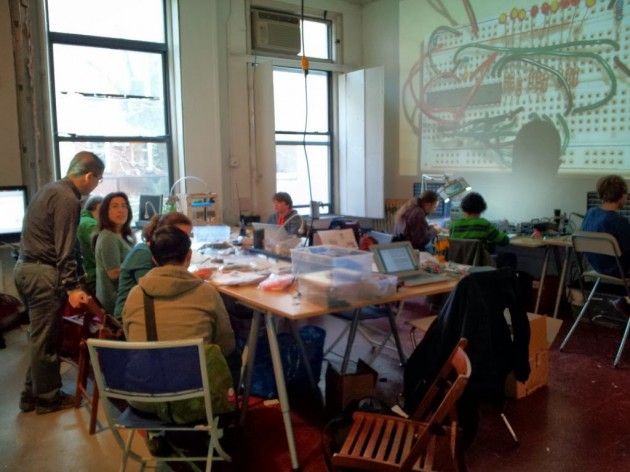Hack Manhattan is a so-called "hackerspace", which is a workplace filled with tools allowing designers and hackers to realise their ideas. At first, we thought hackers were strictly criminal computer programmers. The hackerspace, however, disproved this completely. The term "hacker" was used in a very different context. It referred to designers adjusting or building electronics for creative means. For example, one of their stunning (crowdfunded) projects includes a ping-pong game that can be controlled entirely by brainwaves:
The community does not have a clearly defined hierarchy or boss, all of the approximately 50 members have an equal status. Every member has a key of the workplace, and has an equal vote for decisions in their regular meetings. Especially this flat organisational structure makes the project unique.
When Hack Manhattan wanted to expand their workplace, they required funding for the removal of a brick-wall. Because no single individual owned or ran the place, traditional sources of funding were impossible. Bank loans are simply not given to a non-profit organisation without making a single person legally responsible. Crowdfunding offered a solution. Due to its simple legal structure, members and others in the community were willing and able to contribute to the expansion of the hackerspace.

Only a few hundred dollar was necessary for the garbage disposal of the demolished wall, so the $1,769 raised was more than enough. The rest of the expansion plans were executed on a voluntary basis. The case of Hack Manhattan really demonstrates the power of crowdfunding for circumventing complex legislation surrounding traditional financing. Crowdfunding can play an important role in non-profit organisations lacking a capital buffer.
We were impressed by the way the hackerspace was run. The small workplace was sufficient to allow for the community to realise and share their unique ideas. Read more about their current projects on their website: hackmanhattan.com!